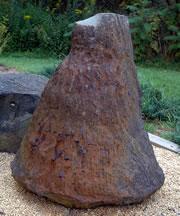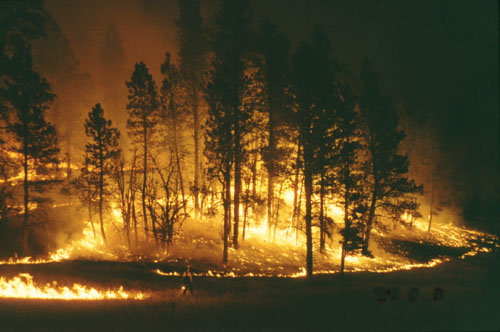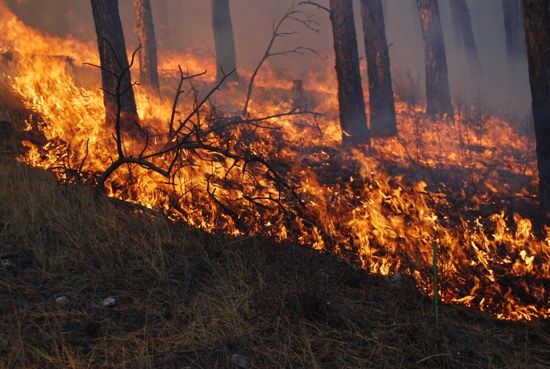Palaeontologists have uncovered a whole sample of the oldest known trees, providing a glimpse of what the Earth's earliest forests might have looked like.
Incomplete fossils of these trees were first found in a rock quarry in upstate New York in the late 1800s and were classified as Eospermatopteris. The trees were thought to live 390 to 350 million years ago. That discovery was in itself exciting, but the fossils contained only the trees' trunks, so no one really knew what the trees looked like.
Now, William Stein of Binghamton University in New York and his colleagues have found two fossils of trees from this period, one of which shows the crown connected to the trunk. The researchers report their findings this week in Nature1.
The work finally finds a home for fossils of the top portion of the tree, which had been found before but not identified as Eospermatopteris crowns. Some palaeontologists had suspected that these fossils were independent plants rather than the tops of trees, with the 'crown' rooted directly into the ground.
The overall architecture of the trees is reminiscent of modern tree ferns, palm trees, and cycads. Eospermatopteris trees predate the evolution of broad, flat leaves like those seen today. Instead they contain what might better be described as photosynthetic 'branchlets' assembled together in fern-like fronds. "At that time, plants were just nothing but sticks," says Stein. "They must have looked really strange, but they were acting as leaves."
Tops and bottoms
Fossils of trunks alone were found in upstate New York in the late 1800s.Fossils of trunks alone were found in upstate New York in the late 1800s.W. Stein
Match fossilized tree-tops with their bottoms is often a struggle says Brigitte Meyer-Berthaud, a palaeontologist at the Agricultural Research Centre for International Development in Montpellier, France. "We can find many different parts of the tree, but generally they are not connected," she says. Although the base of the tree is rooted to the ground and tends to stay there, the aerial portions are more easily broken off and transported away, she explains.
Understanding what the first trees looked like can provide a glimpse into the ancient ecology that shaped Earth's chemical cycles, says Thomas Algeo, a geochemist at the University of Cincinnati in Ohio. When land plants became large, around the time of these trees, they had a substantial effect on geochemical cycles, he notes.
Scars down the trunk of the new fossils suggest that the trees littered the forest floor with cast off branches. Algeo believes that litter would have consisted mainly of lignin and cellulose, which bacteria would not have been able to break down. That means the branches would have been broken up by mechanical erosion rather than by decaying to release carbon dioxide.
Over time, litter from Eospermatopteris and other land plants could have pulled a large amount of carbon dioxide out of the atmosphere, he says, leading to an atmospheric cooling that prompted a short ice age starting about 360 million years ago. "That event was probably caused by burial of organic carbon associated with land-plant evolution," Algeo says.

These tall, ancient trees didn't have leaves, but bunches of 'branchlets'.

Fossils of trunks alone were found in upstate New York in the late 1800s.
h
ttp://www.nature.com/news/2007/070416/full/news070416-10.html









